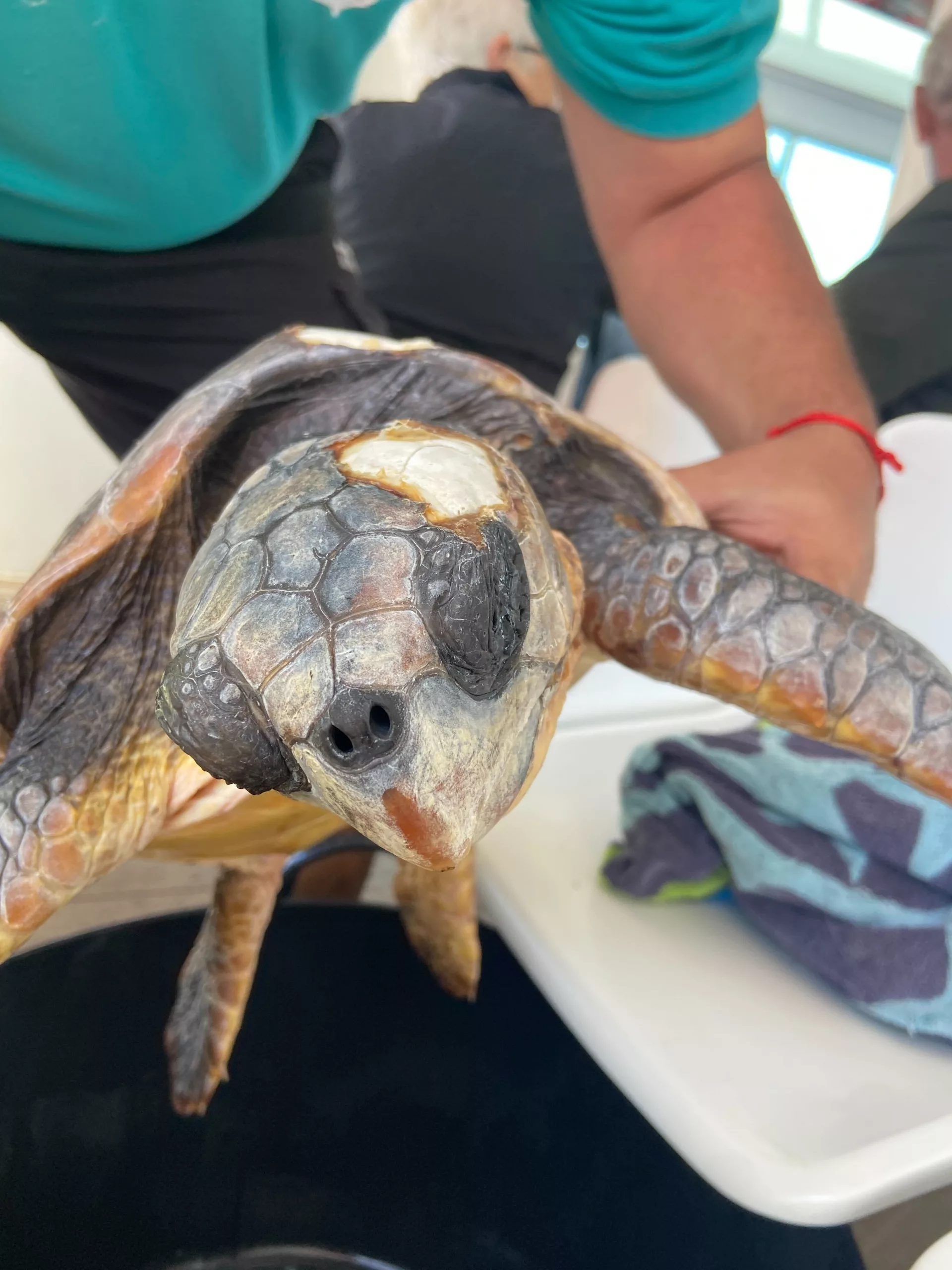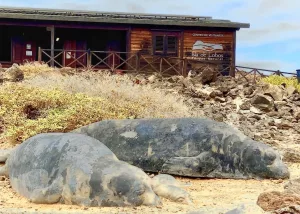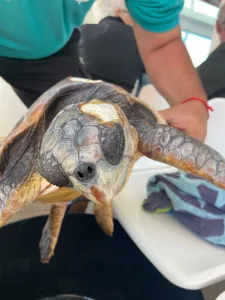In the vast blue of the Atlantic, between Lanzarote and Fuerteventura, stands Lobos Island, a small but significant link in the ecosystem of the Canary Islands.
This islet, declared a nature reserve, is a testament to the rich biodiversity and ecological importance that the Canary Islands host.
Lobos Island, with its status as an underwater reserve, not only protects a unique ecosystem in the world, but has also become a reference point for cetacean watching, offering a unique window to the marine world that surrounds the archipelago. .
The conservation of this natural environment is vital for the maintenance of marine and terrestrial biodiversity, turning it into a place of scientific, ecological and tourist interest.
History and origin of Lobos Island
Isla de Lobos, a small but significant islet located just 2 kilometers north of Fuerteventura, in the archipelago of the Canary Islands, is a place of extraordinary natural beauty and historical wealth. Its formation dates back more than 100,000 years ago, the result of the volcanic activity that characterizes the region. This geological origin has given the island a unique landscape, with rock formations, fine sand beaches and an interior lagoon that is a refuge for migratory birds.
Since prehistoric times, Lobos Island has been a point of interest for the inhabitants of the nearby islands. The Majos, ancient settlers of Fuerteventura, frequented the island, possibly as a fishing and gathering place.
However, the island owes its name to the most emblematic visitors to its shores: the Mediterranean monk seals, also known as “sea lions.” Although these seals are now an endangered species and are no longer found on the island, their legacy lives on in the name of Lobos.
Over the centuries, Lobos Island has witnessed various historical episodes, from being a refuge for pirates and privateers to becoming a strategic point for trade routes between Europe, Africa and America. In the 20th century, the island underwent significant change with its declaration as a nature reserve in 1982, a recognition of its ecological importance and a crucial step towards the conservation of its unique biological diversity.
The island, today, is a sanctuary of peace and nature, protected from massive human intervention. The management and conservation of Lobos Island focus on preserving its terrestrial and marine ecosystem, protecting endemic species and providing a safe haven for fauna.
The island is an example of how natural and human history can intertwine, leaving a legacy of conservation and respect for the environment.
This focus on conservation has allowed Lobos Island to maintain its pristine character and continue to be a vital refuge for a wide variety of species, both terrestrial and marine.
The island is not only a testament to the geological processes that have shaped the Canary Islands, but also a reminder of the importance of protecting our natural environments for future generations.
The underwater reserve of Lobos Island
The underwater reserve that surrounds Lobos Island is a microcosm of marine biodiversity, a pristine ecosystem that reflects the natural wealth of the Canary Islands.
The term “pristine ecosystem” refers to a natural environment that has remained undisturbed by human activity, maintaining its biodiversity and ecological processes intact. These ecosystems are considered areas of great conservation value, as they provide essential habitats for various species of flora and fauna, many of which may be endemic or endangered.
This protected area, designated to safeguard the unique diversity of underwater life, is a testament to the commitment to marine conservation. The clarity of its waters, together with the abundance of nutrients carried by ocean currents, creates the perfect environment for the development of a wide variety of marine species.
Within this reserve, there are habitats ranging from sandy and rocky bottoms to algae meadows, each supporting a complex web of life. Endemic species, some of which are only found in this corner of the world, coexist with a wide range of fish, invertebrates and marine plants. The protection of these ecosystems is vital not only for the conservation of individual species but also for the maintenance of the ecological processes that support marine life in the region.
Whale watching in the surrounding waters
The underwater reserve and surrounding waters of Lobos Island are a privileged setting for whale watching, offering close encounters with some of the most majestic creatures in the ocean.
The strategic location of the island, together with the depth and richness of its waters, attracts some cetaceans such as the bottlenose dolphin, the pilot whale, the common dolphin, the striped dolphin, the hammerhead shark, the sunfish, the flying fish, the sperm whale and loggerhead turtle.
In addition, you can also occasionally see the spotted dolphin, rough-toothed dolphin, black and gray pilot whale, humpback whale and tropical whale. The fin whale being the largest cetacean seen in Fuerteventura.
These encounters are not only spectacular for observers, but also have great scientific and conservation importance.
The study of cetaceans in their natural habitat provides crucial information about their behavior, population and health, contributing to global efforts for their protection.
Activities and sustainable tourism
Lobos Island is not only a refuge for biodiversity but also a destination for sustainable tourism.
Recreational activities on and around the island are designed to be environmentally friendly, offering visitors the opportunity to enjoy its natural beauty without compromising its conservation.
Diving, snorkeling and kayaking are examples of how you can interact with the ecosystem responsibly, providing wonderful experiences while supporting environmental protection.
Challenges and threats
Despite conservation efforts, Lobos Island and its underwater environment face significant challenges.
Climate change, marine pollution and increased tourism are threats that require continued attention and action. Adaptation and mitigation of these impacts are essential for the preservation of the island’s biodiversity and the health of its marine ecosystems.
Collaboration between management authorities, the scientific community and the public is essential to develop and implement effective strategies that protect this valuable ecosystem.
Sustainable practices for the conservation of Lobos Island
To preserve the beauty and biodiversity of Lobos Island, it is essential that all visitors, businesses and local administration adopt sustainable practices:
Stay on authorized trails: The island has designated trails to minimize human impact on the ecosystem. It is vital that visitors stay on these paths to protect vegetation and natural habitats.
Leave no waste or trash: The “take all you bring” policy is crucial to keeping the island clean and protecting native species. Waste can be harmful to local fauna and alter the ecological balance.
Avoid making noise: The tranquility of Isla de Lobos is one of its greatest attractions. Visitors should avoid making unnecessary noises that may disturb wildlife or other visitors.
Respect park rules: It is essential to follow all regulations established by the park administration, including fishing restrictions, the limited number of daily visitors and the specific areas where landing is allowed.
Authorization or permit before visiting Lobos Island
Visiting Lobos Island is a unique experience that connects us with nature and the richness of marine life in the Canary Islands. However, when planning your visit, you should keep in mind that you need a visiting permit. You can manage it for free on the Cabildo de Fuerteventura website (www.lobospass.com) or, if you prefer a more convenient option, when purchasing your tickets with Naviera Nortour, we offer authorization management for a small additional charge. Get ready to discover the seabed of Lobos Island!



